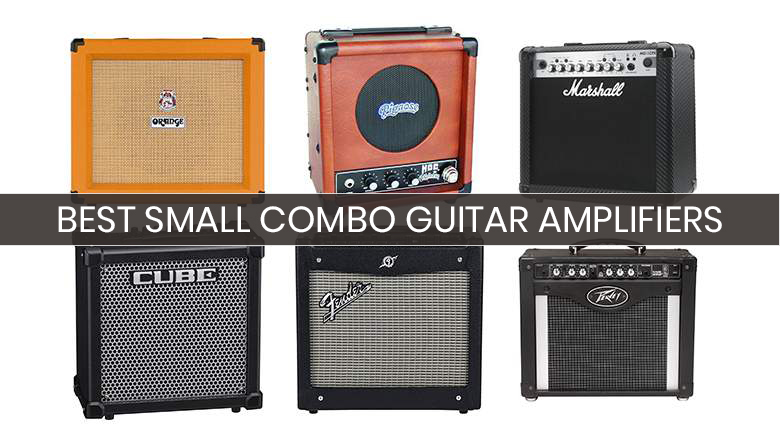
We live in an era of unprecedented choice when it comes to guitar gear. Everywhere you look, a new maker of guitars, pedals, or amps is popping up. With the boutique companies, you’re getting something distinctive, something hand-wired and special. These pieces are excellent, but they’re also expensive.
Expensive is fine for your live rig. You want to have the best tone when it matters, as well as enough power to cut through the band. When you’re practicing at home, though, it isn’t quite so necessary. Many guitarists have a secondary rig that they use for noodling around on.
This usually takes the form of a small combo amp. Guitarists always want good tone, but we might not want to be putting a lot of mileage on that multi-thousand dollar half-stack. Nevermind the simple fact that these beauties are often simply too loud for the home setting.
A decent practice amp should be flexible, capable of good tones at low volumes, and small enough to drag around with ease. It wouldn’t hurt if it was possible to make it loud enough for very small venues, too, so you don’t need to drag out your showpiece for every coffee shop and bar. This usually means something under, say, 40 watts and preferably less than $300.
Small amps sometimes offer on-board effects or modeling so you can dial in a tone that’s close enough to your ideal sound to not be overly distracting while you practice and write. Lately, even very low wattage amps are benefiting from novel efficient speaker designs, so driving amp sounds are easier than ever to get at this level. There are certainly smaller and cheaper amps out there aimed at beginners, but this list is for that sweet spot where serviceable tone and convenience live.
For practice, noodling, and writing, here’s our list of the best small combo guitar amps.

|
Amazon Customer Reviews
|
Price: $139.99 Shop at Amazon | Shop now Read our review |
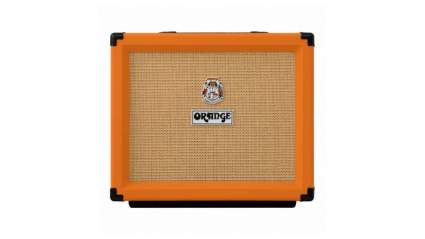
|
Amazon Customer Reviews
|
Price: $299.00 Shop at Amazon | Shop now Read our review |
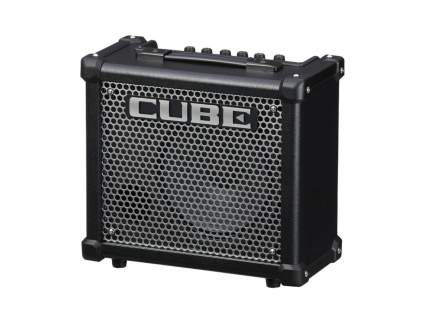
|
Amazon Customer Reviews
|
Price: $185.99 Shop at Amazon | Shop now Read our review |
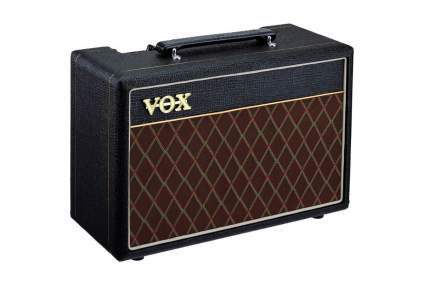
|
Amazon Customer Reviews
|
Price: $119.99 Shop at Amazon | Shop now Read our review |
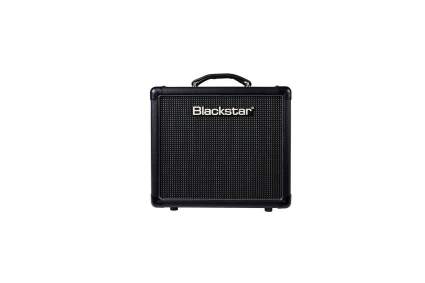
|
Amazon Customer Reviews
|
Price: $299.99 Shop at Amazon | Shop now Read our review |
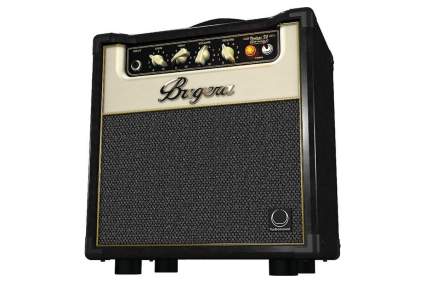
|
Amazon Customer Reviews
|
Price: $279.00 Shop at Amazon | Shop now Read our review |
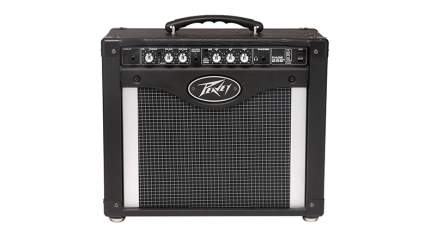
|
Amazon Customer Reviews
|
Price: $149.99 Shop at Amazon | Shop now Read our review |

|
Amazon Customer Reviews
|
Price: $229.95 Shop at Amazon | Shop now Read our review |
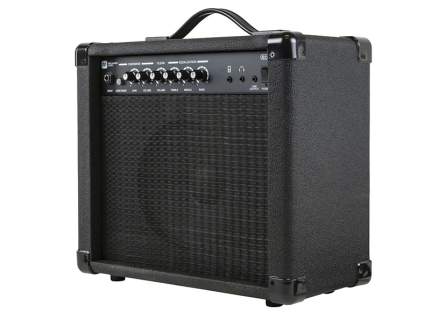
|
Amazon Customer Reviews
|
Price: $135.87 Shop at Amazon | Shop now Read our review |
-
1. Fender Mustang I V2 20-Watt
Pros:- Diverse modeling presets
- Companion software that lets you dial in settings exactly
- On-board tuner
- Modulation, reverb, and delay effects
Cons:- Editing presets on amp somewhat confusing — using the software may be required to get the best tones
- Lots of options means more tweaking than playing
- Some rattling of parts at high volumes
- Heavier drive sounds could be harsh for some tastes
Even more than the ubiquitous guitar designs, when it comes to amps, you’re usually talking about something that is Fender-like or Marshall-like. While Marshall-style amps are generally more compressed and designed to be played wide open, Fender-style amps have more clean headroom and can get shockingly loud before breaking up. This is due to the tube configuration and circuit design, but even for their solid-state offerings, this remains true for the most part.
The Mustang series evolved as a response to the needs of modern guitarists, packing emulation on-board so that the home musician had access to a wide variety of tones without having to own each amp. This little thing comes with 17 of them across 24 presets. If you don’t find anything you like already on the amp, the Fender FUSE software will let you tweak endlessly until you’ve crafted the perfect tone. It might take a little while, but at least you won’t be stuck with middling practice sounds.
Besides that, this thing can get super loud. It’s excellent at low volumes, but if you need to push it, it will get there. There’s a 40-watt version ($199) that still fits below our $300 threshold and would still be acceptable for practice. (There’s also a 100-watt version if you want to make this your stage amp.) I heard a metal guitarist play this to a room of 200 people and couldn’t believe how big and full it sounded.
If you hate the modeling and don’t want to deal with the fuss, you could also opt for the 20-Watt Champion, which is simpler and cheaper and makes a great practice amp. On the other hand, if you want something even more cutting edge, they’ve just released the Fender Mustang GT, which adds wifi and Bluetooth connectivity, improved modeling, and a new display screen. For the same wattage, it’s $130 more, so you have to really want those extra features.
Searching for this on Reverb might turn up a great deal on a used option for less.
Buy the Fender Mustang I V2 20-Watt here.
-
2. Orange Crush 35RT Combo Amp
Pros:- Buffered effects loop
- Super-efficient 10 inch Voice of the World speaker
- Built-in reverb and tuner
- Nicely modeled solid state version of Orange tone
Cons:- CabSim on headphone jack leaves a lot to be desired
- Possibly too loud for some settings
- Solid state Orange amp could be a turnoff
- No modeling or effects
The Crush series was created by Orange to address exactly this market. Folks who want good versatility and great tones in small packages and at reasonable volumes. There are a few options to choose from in the series, with the model names following their specs. “35RT” means 35-watt, reverb, tuner. So, the Crush 20 is just your garden-variety, no frills 20-watt amp. Keep this in mind when you go shopping.
This was my pick and what I use to practice with. I play with a lot of pedals, so I was looking for something with the effects loop so I could emulate my show setup when I’m at home. For under $300, that’s a surprisingly hard requirement to meet at this wattage. (At a slightly lower wattage and in mini-stack form, the Micro Terror Dark has a loop, but only one channel and no reverb.)
It’s also dual-channel, so you get a sparkling clean with good headroom, as well as a dirty channel that can deliver pretty convincing high-gain settings. My one complaint is that the CabSim on the headphone out is pretty middling. I don’t find it very appealing, but then, playing with headphones is always a bit of a drag, anyway.
The effects loop is buffered and delivers crystal clear detail with low noise. Whether you opt for the dirty channel or drive it with pedals, the breakup is very satisfying. It feels to me like they tried (successfully) to fit the voice of an Orange amp into this rather than going for emulating a tube sound necessarily. You still get relatively good picking dynamics, though there’s no denying it’s a little cold compared to tubes. The Voice of the World speaker is fantastic and avoids the anemic hollow quality of other ten inch cones.
Still, considering that the TH30C tube combo goes for over $1,000 more, you could do a lot worse than this offering.
Searching for this on Reverb might turn up a great deal on a used option for less.
Buy the Orange Crush 35RT here.
-
3. Roland CUBE-10GX 10W 1×8 Guitar Combo Amp
Pros:- Three amp tones built-in
- On-board chorus, reverb, and delay
- Companion app allows for expansion of amp tones using COSM emulations
- AUX in and line out
Cons:- Distorted tones aren’t the best
- As gain increases, EQ tweaks may be necessary
- Small speaker shows its size
- Sounds decidedly solid state
Roland amps are known for being reliable workhorses that are versatile and made for the working musician. The latest update to the CUBE series means these small combo amps are packed with options, almost to the point that you could consider forgoing pedals during practice.
I test drove this while on the hunt that ended in buying the Orange and I strongly considered it. The dealbreaker for me was pretty simple: I like my pedals. Having said that, this will take your pedals just fine (no loop, of course), it just seems a bit redundant with everything this has on-board. The Effect knob allows you to choose Chorus, Reverb, or Delay, though only one can be used at a time.
Using the Cube Kit app on both iOS and Android allows you to swap out each of the three amp types using COSM models. This allows you to expand the voicings without having to jam a bunch of additional buttons and switchs onto the top of this tiny amp.
Searching for this on Reverb might turn up a great deal on a used option for less.
Buy the Roland CUBE-20GX 20W here.
-
4. VOX V9106 10W Pathfinder Combo
Pros:- Overdrive switch
- Vox styling and tone
- Two-band EQ
Cons:- No modeling, effects, or reverb
- Only a 6.5 inch speaker
- No tube emulation
Perhaps you’re looking for something in the Vox area. This little practice amp delivers decent Vox-y tones on the cheap in a small package. Though it only has a six inch speaker (won’t be playing any gigs with this one), that means the overall size is smaller and easier to tote around. Perfect for a practice amp. Controls are simple enough and include Gain for use with the Overdrive switch, Treble, Bass, and Volume. There’s a headphone out, of course, for late night practice sessions.
For $100 more, you could opt for the Vox Valvetronix VT20X Modeling Amplifier, which adds a tube preamp, amp modeling, effects, a tuner, and USB out. Opt for the Pathfinder if you’re looking for something basic, but the Valvetronix if you need your practice to include different voicings.
Searching for this on Reverb might turn up a great deal on a used option for less.
Buy the VOX V9106 10W Pathfinder Combo here.
-
5. Blackstar HT1 Series
Pros:- Full tube amp
- Emulated speaker output
- ISF tone control emulates Fender and Marshall amps
- Excellent for recording
Cons:- Not powerful enough for gigging
- No modeling or effects
- May need a compressor pedal to make it come to life
But what if you want actual tubes? There are, indeed, a couple of options at this price point, starting with this ultra tiny Blackstar. Powered by a single 12AX7 preamp tube and a 12AU7 power amp tube, this is made for pure sound at low volumes.
At one watt, you won’t be taking this with you to any gigs. Still, the breakup on this is all-tube, so you’ll get that warm, responsive feel that might be lacking in modeling and solid state amps. The emulated out makes it a fantastic recording amp. Use it direct into your recording input for tone that easily beats software.
It’s also small enough to tuck almost anywhere and you get the ISF tone shaper, which is meant to be Fenderish at one end and Marshallish at the other so you can call up either tone when you need it. If you want to up the power a bit, you could also opt for the HT-5R for $499.99.
Of course, if you should need more than one watt (which is likely) Blackstar also makes the IDCORE in 10, 20, and 40 watt sizes. They have effects, reverb, and six voice options. It’s also much less expensive.
Searching for this on Reverb might turn up a great deal on a used option for less.
Buy the Blackstar HT1 Series here.
-
6. Bugera V5 Infinium
Pros:- Hand-built class-A amp
- EL84 tube
- Turbosound speaker
- Power attenuator for varying wattages
Cons:- No modeling or effects
- Reverb can be overpowering
- Possible buzz issue
- May not be loud enough to gig with
Okay, so one watt isn’t much. Let’s move up to five amps of class-A tone. Class-A doesn’t mean it’s louder for the wattage; all it means is that there is less between you and the output, so transient response is better. You get ever-so-slightly quicker response from the amplifier, which can make a difference for your attack and feel.
Aside from all that, this is approaching boutique territory for very short money. Sure, you don’t get any frills or secondary channels, but at least they thought enough of you to give you on-board reverb. The Turbosound speaker is designed to be extremely efficient, so five watts will get you quite a lot further in terms of relative volume. You probably still won’t be able to do much gigging with it, but for practice and recording, when you’re specifically focusing on the details of touch, this could be an excellent option.
If it does prove too loud for home, the power attenuator in the back will save you. With options of 0.1, one, and five watts, every volume level should be achievable for at-home use. On the other hand, if it isn’t loud enough, you could look at the Bugera BC15, which is a cheaper, 15-watt, two-channel tone machine.
Searching for this on Reverb might turn up a great deal on a used option for less.
Buy the Bugera V5 Infinium here.
-
7. Peavey Rage 258 25W
Pros:- TransTube pre and power amp sections admirably models tubes
- Dual channel with a searing lead
- Modern and vintage voicing switch
- Fairly lightweight
Cons:- No reverb
- No modeling or effects
- Hum and general noise an issue without noise suppression
I would be more surprised to learn that you haven’t already heard or heard of this amp, or at least its little brother, the Rage 158. I’ve had three of them at different points and for different reasons and they all sounded exactly spot-on identical. One of the most reliable sounds on the planet for this kind of money.
The 258 is decidedly better than the 158, though. It’s also capable of being screamingly loud, coming from a fine tradition of Peavey amps sporting this same quality. Fortunately for practice time, it has a well-rounded tone even at low volumes, with the bass response being a highlight.
This is the straightforward, transparent practice amp you want if you’d rather just not think about it. Plug your guitar and pedals in, and get to practicing. The lead channel is surprising in this amp, relying on the TransTube technology to deliver a responsive, gritty breakup that is just a cut above other solid state offerings.
If you’re missing the modeling and the effects (no reverb, really?), you can get the Vypyr VIP 1 20-watt for exactly the same price. Some folks think this sounds better than the Mustang, even. Me, I’d opt for the 258 to get the tonal background of passable tube emulation and slap a worthwhile reverb in front of it.
Searching for this on Reverb might turn up a great deal on a used option for less.
Buy the Peavey Rage 258 25W here.
-
8. Pignose 7-200 HOG-20
Pros:- Rechargeable for ease of use anywhere — 6 to 10 hours per charge
- Compact size
- Squeal overdrive included
- Punchy tone
Cons:- Heavier than it looks — 14 pounds
- Limited tonal possibilities
- Can’t be used continuously while plugged in or battery damage will occur
- Battery may eventually require replacement
Aside from the Crate Taxi, Pignose were the first amplifiers I ever heard of being portable. There are several now, as well as a host of mini amps, but Pignose still holds a special place in the market. This little charmer is certainly among them.
Like the Fender above, this is a 20-watt amp meant for practice and very light gig duty. Unlike the Fender, though, this one is primarily designed to run off of the internal rechargeable batteries. This allows you to take it just about anywhere for practice session. You could even take it busking and make a few cents while you work out those covers. The Squeal overdrive knob controls the gain, and past 12 o’clock switches channels into an overdrive channel. It’s not exactly the vintage Tube Screamer of your dreams, but it’ll do in a pinch.
If you want something even smaller, you could opt for the 7-100 Tweed model, which runs off AA batteries and produces only 5 watts.
Searching for this on Reverb might turn up a great deal on a used option for less.
Buy the Pignose 7-200 HOG-20 here.
-
9. Monoprice 611720 20 Watt Combo
Pros:- Cheap and cheerful
- Built-in overdrive circuit
- Line in, headphone, and line out jacks
- Three-band EQ
Cons:- No reverb
- No modeling or effects
- Not exactly in the same class as some other options
- May not be a useful partner in recording applications
Sometimes the subjective “best” means “best for the price”. On that count, it’s hard to argue with this option from Monoprice, purveyors of incredibly inexpensive, yet surprisingly good electronics of all kinds. I’ve also played their guitar cables and found them to be far better than they have any right to be, so I would certainly consider this in my practice amp quest.
In some respects, this is the quintessential practice amp, especially for beginners. It’s light, it’s cheap, and is perfect for abusing during random noodling sessions, wherever they might take place. There’s an eight-inch speaker, which is typical of the genre, as well as a faux two-channel setup with the Overdrive circuit.
Sure, it doesn’t carry the marque of a well-respected amp maker, but it’s purpose-built for amplifying a guitar in a straightforward way. You can also go right up to our wattage limit with their 40-watt version, which has a ten-inch speaker, an effects loop, high and low inputs, and reverb at under $150.
If all you want is a speaker at the end of some wires, this is the one for you.
Searching for this on Reverb might turn up a great deal on a used option for less, especially on their Monoprice Stage Right 15-Watt Tube Amp, which is also worth considering.
Buy the Monoprice 611720 20 Watt Combo here.
See Also: